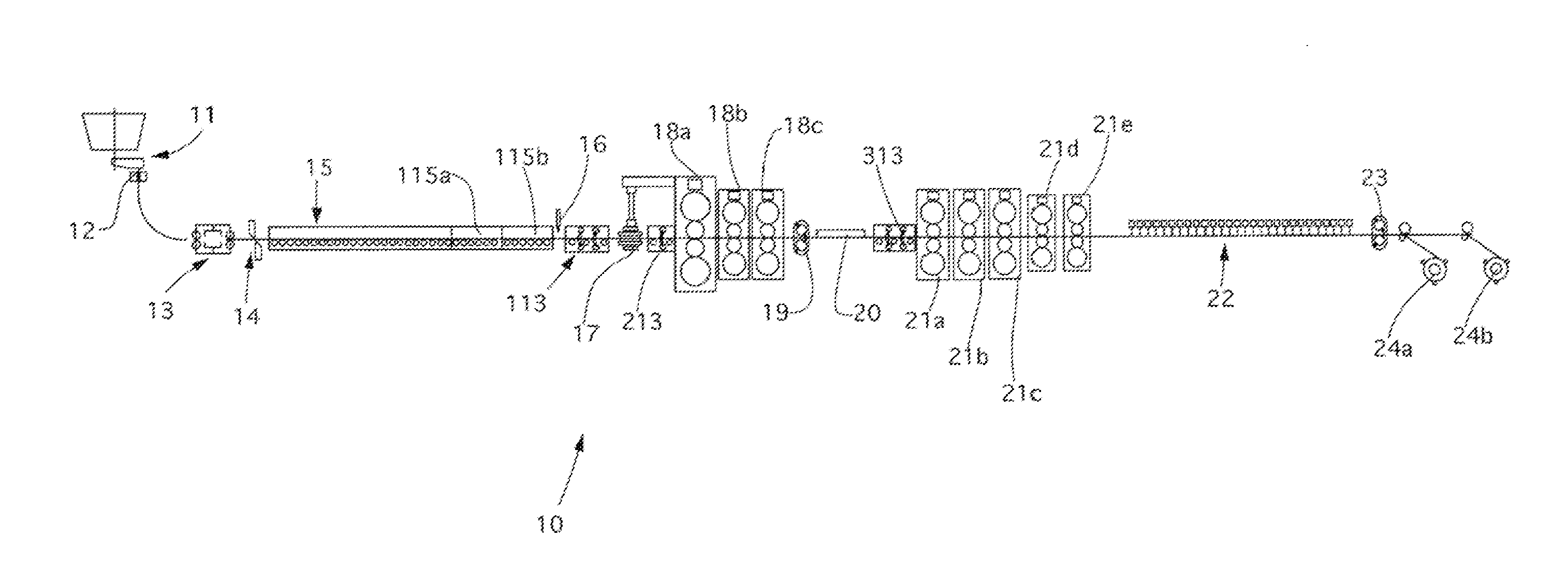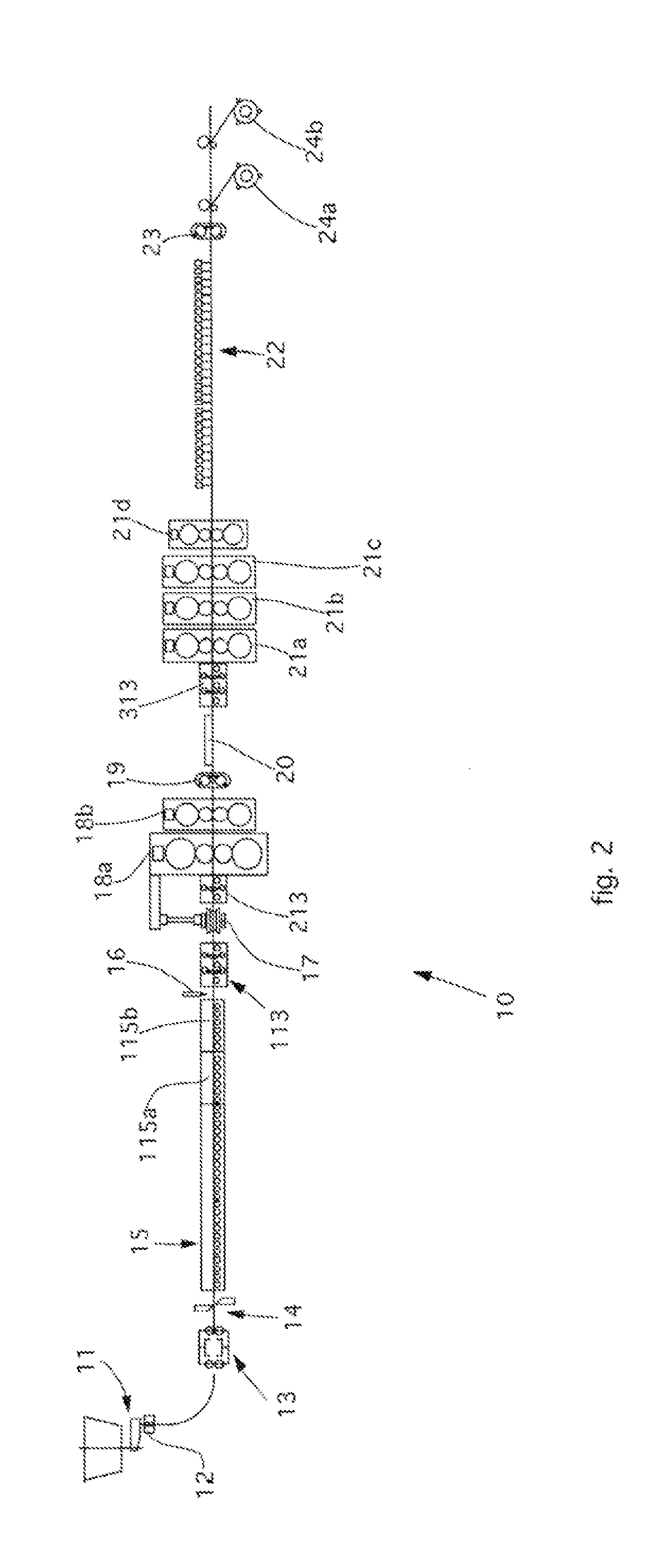Method and plant for the production of flat rolled products
a technology of flat rolled products and production methods, applied in metal working apparatuses, manufacturing tools, work heating devices, etc., can solve the problems of loss in production, inability to insert a second casting line in endless process, and inability to have an intermediate buffer between, etc., to achieve the effect of shortening the tunnel
- Summary
- Abstract
- Description
- Claims
- Application Information
AI Technical Summary
Benefits of technology
Problems solved by technology
Method used
Image
Examples
Embodiment Construction
[0117]With reference to FIGS. 2-4, three possible lay-outs are shown of a casting / rolling line 10 for flat products that implements the principles of the present invention.
[0118]In particular, the lay-out in FIG. 2 is advantageously but not exclusively applied for ranges of thickness of the cast slab from 30 to 70 mm, and productivity from 600,000 to 2,000,000 ton / year.
[0119]The lay-out in FIG. 3 is advantageously but not exclusively applied for ranges of thickness of the cast slab from 60 to 100 mm, and productivity from 1,000,000 to 2,800,000 ton / year.
[0120]The lay-out in FIG. 4 is advantageously but not exclusively applied for ranges of thickness of the cast slab from 80 to 140 mm, and productivity from 1,500,000 to 3,500,000 ton / year.
[0121]In general, the line10 comprises as constituent elements:
[0122]a continuous casting machine 11 having an ingot mold 12;
[0123]a first descaling device using water 13;
[0124]a pendulum shears 14;
[0125]a tunnel furnace 15 having at least the penul...
PUM
| Property | Measurement | Unit |
|---|---|---|
| thickness | aaaaa | aaaaa |
| thickness | aaaaa | aaaaa |
| thickness | aaaaa | aaaaa |
Abstract
Description
Claims
Application Information
 Login to View More
Login to View More - R&D
- Intellectual Property
- Life Sciences
- Materials
- Tech Scout
- Unparalleled Data Quality
- Higher Quality Content
- 60% Fewer Hallucinations
Browse by: Latest US Patents, China's latest patents, Technical Efficacy Thesaurus, Application Domain, Technology Topic, Popular Technical Reports.
© 2025 PatSnap. All rights reserved.Legal|Privacy policy|Modern Slavery Act Transparency Statement|Sitemap|About US| Contact US: help@patsnap.com



